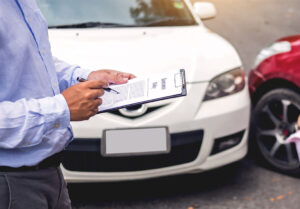Car insurance is an important part of owning a car because it provides you with financial protection in the event of theft, collision, or other unexpected events. You need to understand the different types of car insurance so you can choose the car insurance policy that best suits your needs. The main types of auto insurance covered in this guide are liability, collision, comprehensive, uninsured/underinsured motorist, bodily injury, and gap coverage.
1. Liability Insurance
This is the most basic type of car insurance and is required by most states. It can pay for other people’s medical bills and property damage if you were at fault for the accident. Liability insurance consists of two important components: liability for bodily injury and liability for property damage. If you hurt someone in an accident, personal injury liability will pay for medical bills, lost wages, and attorney fees. It ensures that the injured person is compensated for his losses and resulting costs. If you cause an accident and damage someone else’s property, you are responsible for paying the cost of repairing or replacing that property or car. This includes damage to buildings, cars, or other objects.
2. Accident Insurance
Regardless of who is at fault, if your car is damaged in an accident, collision coverage will pay for the repair or replacement. That’s why this coverage is important if you own a newer or more expensive car. It helps protect your investment. Collision insurance typically covers collisions involving other cars, objects such as trees, fences, or buildings, as well as accidents involving only one vehicle, such as a car tipping over or rolling.
3. Full Insurance Coverage
Comprehensive insurance covers damage to your car that isn’t the result of an accident. Many types of events can cause damage, such as theft or crime, fire, falling objects (such as tree branches), and damage caused by animals (such as hitting a deer). If you have a car loan or lease, many lenders require you to purchase comprehensive insurance. This is because it helps protect their investment in the car.
4. Coverage for Uninsured or Underinsured Motorists
Uninsured/underinsured motorist coverage can protect you if you are involved in an accident with an uninsured or underinsured driver. Underinsured motorist with bodily injury (UIMBI) and uninsured motorist with bodily injury (UMBI) are two coverages in this group. Bodily injury insurance for the uninsured driver covers medical expenses, lost wages, and other costs relating to injuries sustained in a car accident. Underinsured motorist personal injury coverage pays the difference between the driver who caused the accident and the underinsured person’s medical bills. This safety net makes sure that you won’t have to pay for the damage a driver with insufficient insurance causes.
5. Personal Injury Insurance
Personal Injury Protection (PIP), also called “no-fault” insurance, can pay for your medical bills and the expenses of your guests, regardless of who was at fault in the accident. PIP can also pay for other costs related to the accident, such as lost wages, medical bills, and funeral expenses. Some places require a PIP, others do not. It covers more medical costs than regular health insurance, so you can get the care you need without having to go through a lengthy lawsuit to find out who’s responsible.
6. Gap Insurance
Gap insurance is additional coverage you can choose from. If your car is totaled or stolen, you will pay the difference between the car’s current value and the amount you still owe on your loan or lease. Getting this type of insurance is especially useful if you own a new car that depreciates quickly or if you have a lot of debt on your car. With gap insurance, you don’t have to worry about paying for a car you no longer own.
7. More Coverage Options
In addition to the main car insurance policies, many additional covers can offer you extra peace of mind and security. Rental reimbursement is used to cover the cost of a rental car while your car is being repaired after an accident. Roadside assistance includes services such as towing, battery jump-starting, flat tire replacement, and assistance if you are locked out. Custom parts and equipment coverage includes aftermarket changes and vehicle modifications, such as a better stereo or a custom paint job. Ride-sharing insurance provides additional protection for drivers who use their cars with ride-sharing services such as Uber or Lyft.
8. Choose the Right Insurance
Choosing the right car insurance depends on your budget, driving habits, the value of your car, and the requirements of your country. Each state has different basic insurance requirements, so make sure you understand yours and that your policy meets them. What coverage you need, and how much, largely depends on the value of your car. For newer and more expensive cars, coverage may need to be more thorough. Think about how often you drive and what roads you usually use. If you travel long distances or often drive in the city, you are more likely to be involved in a car accident. It’s important to have enough coverage, but it’s also important to choose coverage that won’t break the bank. Get quotes from different insurance companies to find the best deal between price and benefits.
Conclusion
To make an informed choice about your insurance, it is important that you know the different types of car insurance. Different types of coverage, such as liability, collision, comprehensive, uninsured/underinsured motorist, bodily injury, and gap coverage, provide different amounts of coverage to meet different needs. Carefully considering your situation and the rules of your country can help you choose the right car insurance package to stay safe on the road.
FAQs
1. What is the coverage of car insurance?
Auto insurance is a contract between you and your insurance company that protects you against financial loss due to theft, collision, or other unexpected events involving your car. An insurance company agrees to pay certain costs associated with auto damage, injuries, and other liabilities in exchange for premiums.
2. Why is it important to get car insurance?
Having car insurance is important because it helps protect your finances in the event of an accident or other car problems. It takes care of your medical bills, car repairs, and legal fees, making your finances easier. Additionally, most states require drivers to have auto insurance. This ensures that all drivers have at least a certain level of safety.
3. Do you need car insurance?
Most places require you to purchase car insurance. Different states have different basic coverage requirements, but most include liability coverage to pay for any injuries or damage you cause to others in an accident. Some states also require additional coverage, such as personal injury protection and uninsured driver coverage.
3. What is the difference between accident insurance and comprehensive insurance?
Comprehensive insurance covers damage to your car that is not the result of an accident, such as damage from theft, vandalism, fire, falling objects, animals, and natural disasters. Regardless of who is at fault, accident insurance will pay for the damage caused when your car hits something or another vehicle. Neither type of insurance is required, but they are recommended to protect your car against a variety of risks.
4. What are the rewards for not filing a claim?
What is a No Claims Bonus (NCB) or No Discount (NCD)? NCB or NCD is the discount on your car insurance for each year that you do not make a claim. The longer you don’t file a claim, the greater your discount will be. In the long term, this can significantly reduce the costs of your insurance. However, depending on the insurance company’s rules, filing a claim could reduce or eliminate your no-claim bonus.
5. Can I transfer my car insurance to a new car?
Yes, you can transfer your car insurance to a new car. When you buy a new car, you will need to call your insurance company to add the new car to your policy. If you buy a new car, your rates may change. It depends on the type, value, and brand. To ensure you remain covered, do not cancel your old policy before your new policy comes into effect


